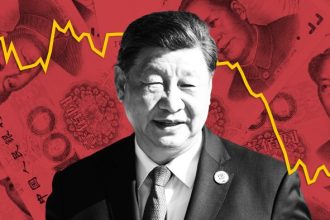When federal student loan borrowers resume their payments in the fall, they’ll find another repayment option available to them.
The U.S. Department of Education said borrowers can enroll in “the most affordable repayment plan ever created” later this summer, and before the over three-year-long pause on federal student loan payments concludes.
According to the Education Department, the Saving on a Valuable Education, or SAVE plan, is an income-driven repayment plan that can cut borrowers’ monthly payments in half, and will leave many people with a $0 monthly bill.
“The SAVE plan is very generous to borrowers, almost like a grant after the fact,” said higher education expert Mark Kantrowitz.
More from Personal Finance:
Americans push back against ‘tip creep’
Who does inflation hit hardest? Experts weigh in
3 reasons it can be smarter to rent, even if you can buy
But there’s a catch: Some of these benefits won’t fully go into effect until next summer, due to the timeline of regulatory changes.
The new SAVE plan replaces one of the existing income-driven repayment plans, which cap borrowers’ bills at a share of their discretionary income with the aim of making the debt more affordable to pay off.
Instead of paying 10% of their discretionary income a month toward their undergraduate student debt under the previous Revised Pay As You Earn Repayment Plan, or REPAYE plan, borrowers will eventually be required to pay just 5% of their discretionary income. Borrowers who make under $15 an hour won’t need to make any payments, the department says.
Kantrowitz provided an example of how monthly bills could change with the overhauled option.
Previously, a borrower who made $40,000 a year would have a monthly student loan payment of around $151. Under the SAVE plan, their payment would drop to $30.
Similarly, someone who earned $90,000 a year could see their monthly payments shrink to $238 from $568, Kantrowitz said.
Most borrowers should qualify for the plan as long as their loan is in good standing.
Halved payments won’t go into effect until July 2024
The reduction in payments on undergraduate loans to 5% from 10% of discretionary income will be available to borrowers in July 2024, when the SAVE plan is fully implemented.
At that point, borrowers who have both undergraduate and graduate loans will pay a weighted average between 5% and 10% of their income based upon their original principal balances, the Education Department says.
But borrowers who enroll now in the SAVE plan — or before bills restart in the fall — should see certain benefits sooner.
A higher share of their income will be protected from their monthly payment calculation, for one. As a result, single borrowers earning less than $32,805 a year will not have to make any payments.
“This will allow them to focus on food, rent and other basic needs instead of loan payments,” the Education Department said.
In addition, under the SAVE plan, the agency will cease charging any interest that is not covered by the borrowers monthly payment.
Married borrowers who file their taxes separately also will no longer be required to include their spouse’s income to get their payment calculation.
Read the full article here





